• The Lasting Novelty and Dramatic Power of Wagner’s Das Rheingold •
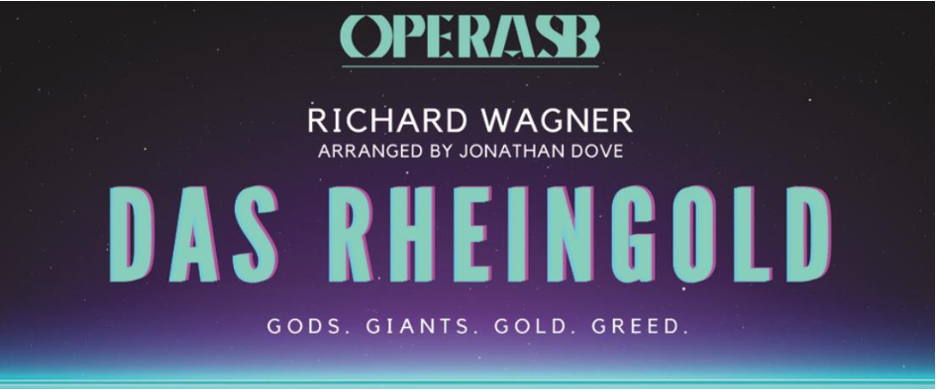
In 1849, the 36-year-old Richard Wagner was on the verge of becoming the most successful opera composer in German-speaking Europe. And then calamity struck. The city of Dresden, where he was currently living, was seized by three days of violent revolution, in which radical, nationalist forces attempted but failed to overthrow the conservative, royalist government of Saxony. Wagner, who was aligned with the defeated revolutionary forces, had to flee Dresden, lost his job as the Kapellmeister (musical director) of the Saxon Court opera, and went into exile in Switzerland as he would be subject to prosecution, maybe even for the death penalty, if he stayed in Germany.
Such an unfortunate reversal of fortune would probably shock most artists into retreat from the world, but not Wagner. On the contrary, the swirling political currents of the time, the turmoil of his private life, and his towering ambitions as a creative artist, drove him to write a gigantic work in response to the gigantic crises he and the world were encountering. In doing so he wrote, arguably, the largest opera ever created – The Ring of the Nibelung. This was not to be directly about the current political situation, but, in a time-honored theatrical tradition, Wagner would use ancient myths and legends as a perspective through which to view contemporary life. He chose as his source material the old Norse myths, the Icelandic Eddas and sagas, and the German medieval poem, The Song of the Nibelung. Minor composers had already begun to employ this material, but no one had conceived, as Wagner did, of using it both to capture the thrilling Romantic aura of the old epics and to provide a devastating critique of the social, economic, and sexual privations of the mid-19th century.
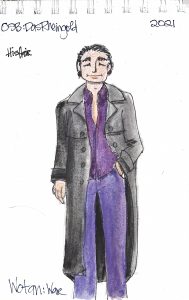
Artist’s rendering of Wotan for OSB production of Das Rheingold.
Wagner had sketched ideas for The Ring prior to the Dresden revolution, but it was only after he had settled in exile Zurich that he started to compose the work. He always wrote his own libretti and it took him close to four years to write the poem for The Ring; this was so long and so packed with people and events, that he divided what was intended to be one music drama into four separate works, each to be performed on separate evenings – Das Rheingold (The Gold of the Rhine), Die Walküre (The Valkyrie), Siegfried, and Götterdämmerung (Twilight of the Gods). It then took him another 21 years to write the music. To accommodate the entire work, which he claimed could not be adequately staged in any existent opera house, he built the Bayreuth Festival Theatre, which is still in regular use today. So, it took a good 28 years, from the first inklings of The Ring to the first complete performance in Bayreuth in 1876, for The Ring cycle to be created. It is now one of the central works of the classic operatic repertoire and takes four evenings and between 16 and 17 hours to play completely.
Although The Ring is based upon actions and events in the various literary sources Wagner consulted, the plot is entirely his fabrication, the sole product of his colossal imagination. The cycle as a whole tells the story of the God Wotan, who wishes to create a society where humans can live in total freedom, free to act spontaneously and to love whomever they choose. But this admirable goal is constantly confounded, first by weaknesses in Wotan himself, who too greatly loves the power he has and is prepared to enter into nefarious practices to sustain it; secondly by the needs of society and those of the free individual being constantly at odds with each other; thirdly, by the limits and corruptibility within the free individual him/herself. The story of the entire cycle traces the fate of Wotan’s offspring, Siegmund, Sieglinde, and their son Siegfried; the destiny of Brünnhilde, also Wotan’s daughter, who is banished from her godly position and is ultimately betrayed by her human lover and companion, Siegfried; and the downfall of the Gods through their fatalistic acceptance of what is to come. Central to the story is the Ring itself, a talisman that will bring total power to the individual who possesses it but only if s/he renounces love. The opening of The Ring, in the depths of the Rhine, suggests the creation of the world; the ending, in which Brünnhilde sacrifices herself on Siegfried’s funeral pyre and Valhalla, the fortress of the Gods, is consumed in flames, reads as if it is the end of the world. This massive work is akin to a history of the human race.
Das Rheingold is the shortest of the four Ring music dramas. It takes two and a half hours to perform (but only one hour and fifty minutes in the version used by Opera Santa Barbara); the other three music dramas each last between four and six hours. Das Rheingold is intended as an introduction to The Ring, and so it is briefer and more concise than the works to come. It tells the tale of how the talismanic Ring that can give the possessor absolute power was forged and, through a brutal murder toward the end, demonstrates how the power it wields will bring into being a world ruled by fear and greed. It sets up the themes that will be central to the music dramas to come.
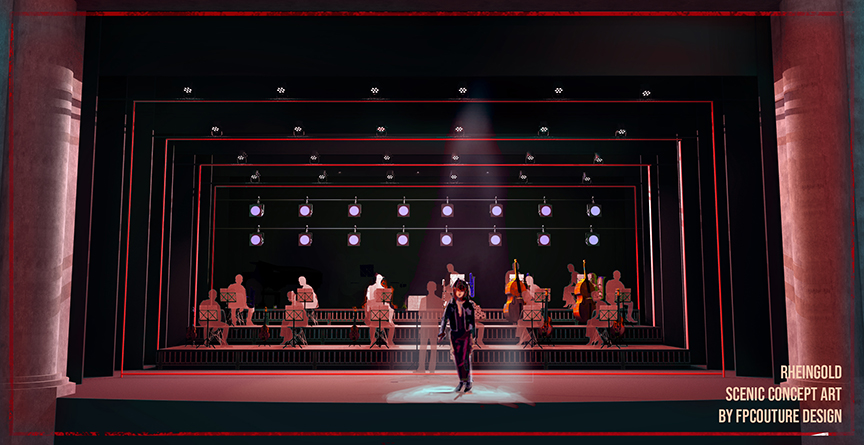
Scenic Concept Art for OSB production of Das Rheingold.
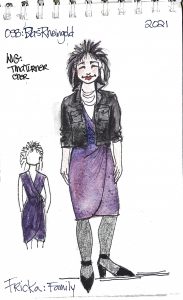
Artist’s rendering of Fricka for OSB production of Das Rheingold.
Das Rheingold begins with a scene of supernal stillness. We are at the bottom of the River Rhine and the three Rhinemaidens are swimming joyfully around the Rhinegold, a natural mass of gold that is blindingly beautiful when caught in the sun’s rays that penetrate the water. The Rhinemaidens are assailed by a hunchbacked dwarf, Alberich, one of the Nibelungs, a tribe of ironsmiths. Each of the Rhinemaidens rejects his advances and then Alberich, in the knowledge that the Rhinegold could give him absolute power, in fury and frustration and renouncing love, he steals the Rhinegold, leaving the waters of the river cold and dark. We then ascend from the depths of the river to the heights of the mountain. Wotan, the chief of the gods, is resting on a peak, contemplating the massive castle, Valhalla, that has just been built for him; Valhalla will be the gods’ stronghold from which they will rule for ever. Something, however, is wrong, as Wotan’s wife Fricka points out to him: the giants Fasolt and Fafner, who built Valhalla for Wotan, have not been paid. In retaliation for Wotan’s dishonorable conduct the giants have kidnapped Freia, the goddess of beauty, love, fertility, and eternal youth, and have insisted they will only release her once they are paid their due wages. The gods, who also include Froh, the god of happiness, and Donner, the god of thunder, urge Wotan to do something about this as, without their daily diet of golden apples from Freia, the gods will age and eventually die. Wotan summons Loge, the demi-god of fire, who informs him that after stealing the Rhinegold, Alberich dragged it down to Nibelheim, where the Nibelung race forge metals, and he is amassing great wealth for himself by forging the Rhinegold into jewellry, weapons, magical instruments, and, of course, the Ring. Wotan and Loge descend into the depths of the Earth to plunder Alberich’s ill-gotten wealth.
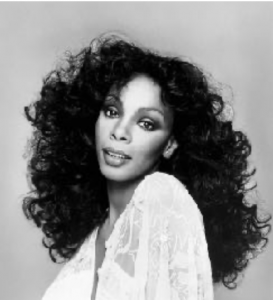
Hair/Makeup Inspiration for Freia, Goddess of Love, in OSB production of Das Rheingold.
In Nibelheim, Wotan and Loge survey the horrific sight of hordes of Nibelung dwarves at their forges. They confront Alberich, and Loge, by means of a clever trick, manages to capture him and with Wotan drags him back to the surface of the earth, where they tell Alberich they will only free him if hands over all his gold. Alberich agrees, secretly assuming that he can make even more wealth if he can just keep the Ring. The Nibelungs haul his treasure to the surface. Wotan, however, knows about the Ring’s powers and insists that Alberich surrender the Ring as well. When he refuses, it is wrested from him by force and, as he loses it, Alberich bestows on it a terrible curse, foretelling that it will only bring terror and misery to whomever possesses it. As he scuttles off into the crevices of the mountain, the gods reassemble and the giants return with Freia to claim their ransom. The giants have different ideas as to how they would like their payment. Fasolt, who has fallen in love with Freia, would rather keep her, but Fafner would be happy solely with the loot from Alberich. It is decided that they will only take the loot if, when it is all piled up, it completely hides Freia. The gods pile it up, but they cannot completely hide her, Fasolt can still see her through a chink, and Fafner demands that the Ring be thrown in. Wotan refuses but suddenly Erda, the primeval goddess of the Earth and the source of all wisdom, appears, warning Wotan to give up the Ring and foretelling the eventual demise of the gods. Wotan submits, throws the Ring into the hoard. Fasolt and Fafner start picking up the loot but quarrel over who gets what, and Fafner kills Fasolt with one vicious blow to the head: Alberich’s curse is already being fulfilled. The gods react in horror to the murder, but then assemble to process, over a rainbow bridge, into their new home, Valhalla. As they advance, to a magnificently pompous march, we hear the Rhinemaidens still bewailing the loss of the Rhinegold, while Loge refuses to join the gods in Valhalla as he knows that they are ultimately doomed.
For audiences who are becoming acquainted with Das Rheingold for the first time, this introductory opera to The Ring offers surprises. First, it is an extremely taut and fast-paced drama, packed with exciting incident. Secondly, while it is a highly serious drama, an allegory on the destructive nature of greed and power, it has a surprising amount of comedy, much of it raw, some of it intensely ironic. But most strikingly perhaps, the music is unlike anything else that had been written for the operatic stage before, and we can still feel its novelty, originality, and sheer dramatic power. Until the early 1850s, when Das Rheingold was written, the vast majority of opera was written in what has been called the “numbers system”, in which discrete musical numbers – arias, duets, ensembles, choruses – were linked by passages of recitative – “sung speech”. Recitative was usually employed to move the action along, to cover the nuts and bolts of the plot, whereas the musical numbers elaborated the emotions and thoughts of the characters. The result tended to be an action that stopped and started. By the mid-19th century, however, this modality was perceived as dated and therefore artificial, and attempts were made to create a continuous action, with dialogue that resembled everyday conversation. Many composers, in their different ways, responded to this need for change, but none more successfully than Wagner.

Hair/Makeup Inspiration for Wotan in OSB production of Das Rheingold.
His earlier operas, The Flying Dutchman, Tannhäuser, and Lohengrin, were substantially written in a traditional vein, but Das Rheingold was the first to be written in the more conversational mode. The music seems to perform a different function than in earlier works. In the “numbers” opera, melody reigned supreme and so composers strove to devise beguiling melodies that would stick in the audiences’ memory; the result of this was that often the quality of the melody seemed more important than the depiction of character. Wagner, however, insisted that the purpose of melody in opera should be to express the feelings, impulses, ambitions, and fears of the characters; it should enrich our dramatic understanding of them and bring them much closer to us as a result.
To bring order and dramatic clarity to his continuous music, Wagner devised a network of themes that help us understand the meaning of the drama. These themes have since been labeled leitmotifs. A leitmotif is, very simply, a recurring musical phrase, or a brief melody, that is associated a specific character, an object, an idea, or a situation; Das Rheingold, like the later Ring dramas, has several leitmotifs. For example, when the brass in the orchestra play an emphatic downward stepping theme, this indicates Wotan’s spear and the power that he wields; every time that leitmotif is repeated, we are reminded of Wotan’s desire for power or of his attempt to exercise it. Or, as Alberich curses the Ring once it has been taken from him, a threatening leitmotif expresses the awful power of that curse; later, when Fafner slays Fasolt, we hear that leitmotif again and know that we have just witnessed the consequences of that curse. There are leitmotifs for all the human emotions – love, fear, hate, anger, adoration, indifference – and when we hear those leitmotifs in the orchestra or in a character’s vocal line, we know they are experiencing those feelings.
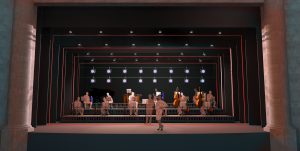
Scenic Concept Art for OSB production of Das Rheingold.
Wagner warned against audiences becoming too preoccupied with leitmotifs and even complained that they discovered far more leitmotifs than he claimed he had written. Indeed, even today you will find some critics of Wagner who will insist there are only 50 or so leitmotifs in the entire Ring, while others have discovered upward of 200! Nevertheless, once one has mastered the basic leitmotifs, many of which can be clearly heard in The Ring, they help one in understanding the basic issues of the drama. But Das Rheingold can also be greatly enjoyed without any such prior knowledge. It is a tight, high-speed drama that has spoken directly to every generation since the 1850s and is, perhaps, even more applicable to our own time than it was to Wagner’s.
The version that is being used by Opera Santa Barbara at its performance on June 27 is somewhat reduced from Wagner’s original score. About 40 minutes have been cut and the original orchestration that called for over 100 instruments has been reduced to 11. The current setting, by the British composer Jonathan Dove, has been made specifically for smaller opera companies that have neither the space nor the resources to meet all of Wagner’s exacting demands. It has been performed widely and has won many new admirers to The Ring. We can also speculate that Wagner himself might not have objected to this reduced version, as he frequently mentioned that he wished his work could be seen in more intimate environments than those of the great opera houses. Also today, over the past 14 months on the rare occasions Wagner has been performed live, due to Covid restrictions the music has had to be played by smaller orchestras, and this has had the advantage of revealing many frequently moving details in the music that tend to be hidden in the generalized sound of the large orchestra. As it is, you will still be able to enjoy the extended magical E flat chords at the start that suggest the creation of the world, the glorious lyrical solo of Loge as he describes the spontaneous joy of people living free from greed and money, the thrilling descent of Wotan and Loge into Nibelheim, the terrifying moment when Alberich curses the Ring, and, above all, the splendid, if somewhat inflated march of the gods as they enter into Valhalla.
— Simon Williams
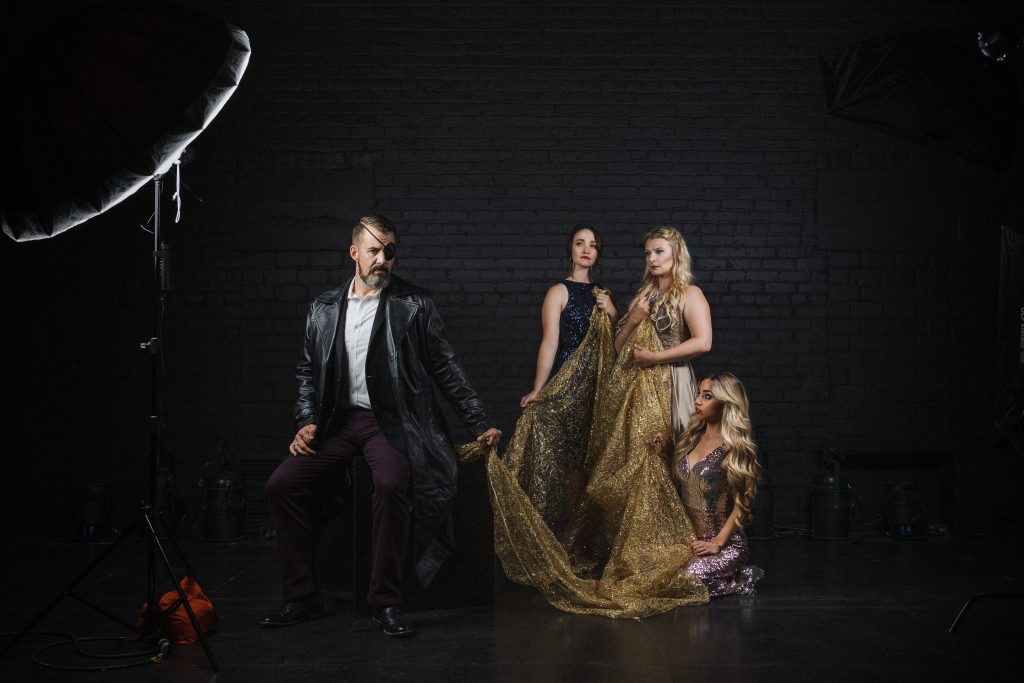
Photo by Zach Mendez


